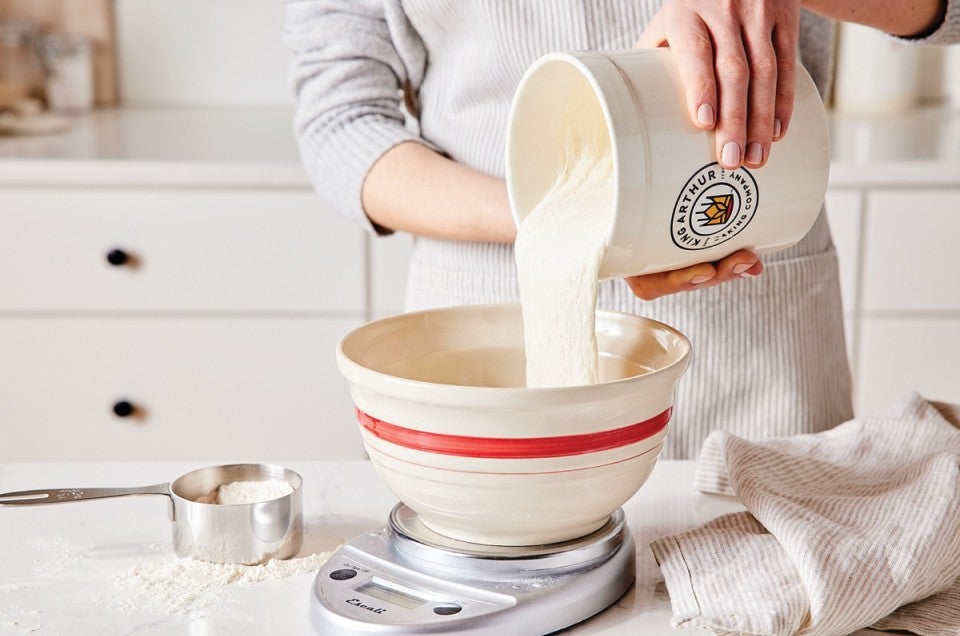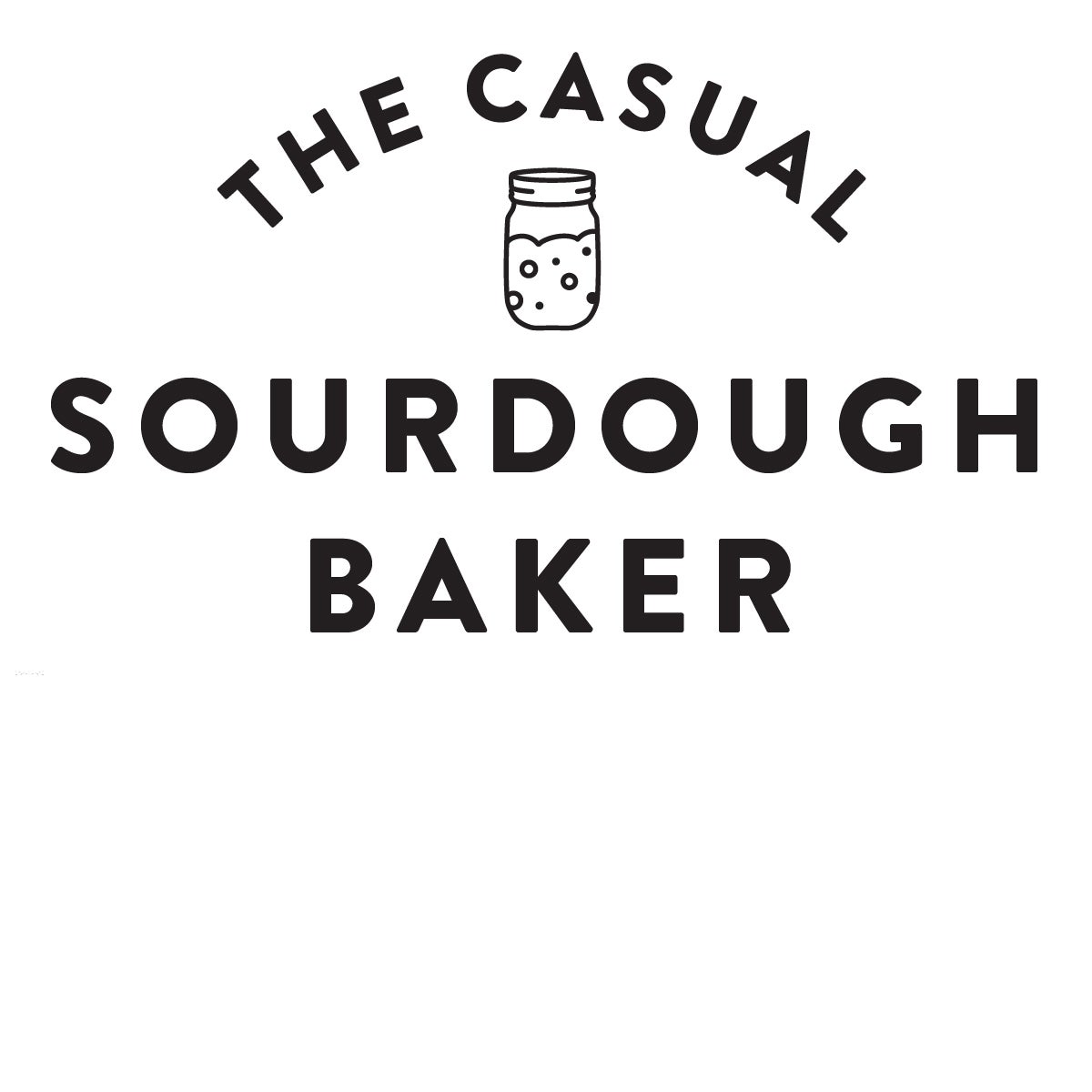Yes, you can bake using sourdough starter from the fridge
Using unfed starter to make bread? It's possible!


 Love sourdough, but looking for a bit more flexibility and ease when you bake with a starter? In The Casual Sourdough Baker, PJ shows you just how wonderfully stress-free sourdough baking can be, from simple but richly flavored loaves to countless easy ways to use your discard. If you're just beginning your journey, our Sourdough Baking Guide lays out the basics you need for success — whether you decide to become serious or go casual! Today's topic: baking using sourdough starter from fridge.
Love sourdough, but looking for a bit more flexibility and ease when you bake with a starter? In The Casual Sourdough Baker, PJ shows you just how wonderfully stress-free sourdough baking can be, from simple but richly flavored loaves to countless easy ways to use your discard. If you're just beginning your journey, our Sourdough Baking Guide lays out the basics you need for success — whether you decide to become serious or go casual! Today's topic: baking using sourdough starter from fridge.
* * *
If you’re a regular sourdough baker like me, do you ever get tired of waiting for your just-fed starter to grow?
Maybe not. Maybe you've been baking with sourdough for a while now, and you've got the process nailed: Feed your starter, make sure it's good and active, then use it to make bread dough. It's tried-and-true for a reason.
But here's what sometimes happens to me: I find a new sourdough recipe I can’t wait to try. It calls for “ripe (fed) starter.” Which means feeding my refrigerated starter once … twice … three times or more, waiting impatiently after each feeding to see if it doubles in size within eight hours (the sign of a ripe, healthy starter).
So now I'm potentially 24 hours into the process and I haven’t even gotten past the first line of the recipe — let alone enjoyed a hot slice of just-baked bread. It's enough to make my starting enthusiasm wane a bit.
Let me tell you a secret that I've discovered from my own baking: So long as you're a pretty experienced sourdough baker, you don’t have to always feed your sourdough starter and wait for it to double before using it in a recipe calling for ripe starter. Instead, you can take the starter out of the fridge, measure out the required amount, and simply combine the unfed starter, cold and hungry, with the remaining dough ingredients. (Note: For those of you newer to sourdough baking, please continue to feed your starter the standard way to get comfortable with the nuances of sourdough baking — though do bookmark this post to come back to in the future.)
And guess what? The unfed starter, rather than going into a sulk, sees that enormous meal of flour and water and happily begins to grow. Bingo: You’ve just saved yourself a 24-hour wait.
Is this a lightbulb moment for you? It certainly was for me when I first read Maura Brickman’s Pain de Campagne recipe. Brickman is, as the recipe says, “a serious home baker … who doesn't let her bread's schedule rule her life.”
In her recipe, Maura mixes the dough using a small amount of cold, unfed starter (rather than ripe starter). She lets the dough rise for approximately 12 hours — enough time for the unfed starter to grow exuberantly, given all that flour and water — before the dividing and shaping steps. Simple, straightforward, and … well, a lovely surprise for those of us used to prepping starter with a feed and a rest before using.
Does this “no-feed” method work with any sourdough bread recipe calling for ripe starter? It should — after all, you ARE feeding the starter, you’re just not feeding it before you begin. The catch? You’ll definitely need to extend the dough’s rising time beyond what the recipe says. But once you try this nifty method a few times to nail down a general fermentation timeframe for your own starter, I think you’ll feel confident baking using sourdough starter from fridge again and again.
There is one caveat here: If your starter hasn't been fed for quite a while and is looking unhappy (e.g., covered in dark liquid), don't expect to miraculously bring it back to life in less than a day by using this no-feed method. You'd best feed it the standard way a few times, making sure it's good and healthy, before trying this.
Now, not to say you’ll suddenly be able to make lickety-split loaves of sourdough with unfed starter; the starter still needs time to feed and grow. The difference is that growth is happening during the recipe’s “bulk ferment” — the time period after you combine (and knead or fold) all the ingredients and let the dough rise, prior to shaping.
So, how much more rising time will you need to give your dough if you're using unfed starter, instead of the ripe (fed) starter that a recipe calls for? Here's what I've found:
How do you know when your dough is ready to move on to shaping, the next step? You want your dough to double in size before you shape it — just like you would have waited for your fed starter to double in size before using it. But don’t fuss; remember, we’re taking a casual approach here. If the dough is a bit undersized or has more than doubled, go ahead and shape it; all will be well in the end.
Many sourdough bread recipes go for the “belt and suspenders” approach to rising, calling for both ripe (fed) sourdough starter and active dry or instant yeast. If this is the case with your chosen recipe, your bulk ferment won’t need to be extended as much. Again, simply wait until the dough has doubled in size, however long that takes.
Wait, so it’s still taking me a long time to make bread? Yes, but here’s the difference: You’re not anxiously checking your starter to see whether it’s doubled in 8 hours. You’re not worried about catching it at its peak, when it’s domed and perhaps JUST beginning to settle back a bit. You’re taking a more relaxed approach to the whole sourdough baking process, something I've truly embraced in my regular routine.
When feeding your starter the conventional way, you first discard a portion before adding flour and water to the remainder. And while there are plenty of ways to use this discard starter, you can also choose to avoid generating any discard in the first place.
How? Simply by NOT feeding your starter before you use it, as discussed at length in this article. Here's what I've been doing: Simply weigh out the amount of unfed starter my recipe calls for from its container in the fridge and add it to my dough. To maintain the amount of starter I keep on hand, I replace the same amount (by weight) I’ve used with water and flour.
Say your chosen recipe calls for 100g of starter (a scant 1/2 cup). Scoop that 100g for the bread dough into your mixing bowl. Then add 50g each flour and water to the starter left in the storage container. Stir, cover lightly, let rest for a few hours, then place the container back in the fridge. Voilà! Fed starter — no discard.
I tend to feed my starter every couple of weeks or so; it's always fairly healthy and responds well to this "no pre-feeding" method. If you're not good about feeding your starter, though, and often find it needing quite a bit of care when you finally remember it, please stick with the standard way of feeding.
If you're a seasoned sourdough baker who typically feeds your starter before baking with it and are happy with the process and results, more power to you; don’t change a thing!
But if you find that the classic “feeding and waiting” process doesn’t always work with your schedule, don’t be afraid to try something new — like using sourdough starter from fridge to make bread. In my experience, the worst that can happen is following a new path to a familiar destination: delicious, crusty bread.
Interested in another way to fit sourdough bread baking into your schedule? See: The power of adding commercial yeast to your sourdough bread.
Cover photo by Kristin Teig.